This didn’t start out to be a blog. This morning I was uploading grasses & sedges to my online stock library of plant images when I came to the genus Carex. It’s a very slow process, keywording and uploading, squeezed in between the rest of life. Last winter, I managed to get Cacti and Succulents and Ferns and Cycads uploaded; this year I’m hoping to complete Grasses and Bulbs.
As I uploaded photos of Carex buchanani, leatherleaf sedge or Buchanan’s sedge from New Zealand, I recalled fondly the year I grew it in the pots on my lower deck in Toronto. It was 2013 and the containers are the double-walled resin pots I’ve had for two decades. In British Columbia leatherleaf sedge would be perennial but in my Toronto garden—and especially in exposed pots – it’s an annual. As I looked at photos from that year, it occurred to me that ornamental grasses don’t always get their due as hardworking container plants. As a compulsive chronicler, I had photos from the week I planted it until the very end of the year (which featured a disastrous weather event in the city’s history). I thought you might enjoy browsing through six months in the life of Carex buchananii, the leatherleaf sedge. First of all, let’s raise a glass (grass?) to John Buchanan (1819-1898), Scots-born New Zealand botanist and draughtsman and author of the 3-volume folio The Indigenous Grasses of New Zealand for whom leatherleaf sedge is named.
June 1 – Now let’s look back at the spring of 2013. I planted the six pots at the end of May, and this is what they looked like on June 1st. Carex buchananii was in the centre with an assortment of fancy-leaf pelargoniums and orange Calibrachoa and dusky-hued sweet potato vine (Ipomoea batatas) surrounding them.
June 12 – By now, my neighbour’s beauty bush (Kolkwitzia amabilis) was in full bloom and the deck pots were filling out a little.
June 21 – On the summer solstice, my deck garden down the stairs from the containers was frothy with Clematis recta ‘Purpurea’….
…… and the leatherleaf sedge was fountaining as the pelargoniums grew bigger.
July 4 – Now summer was here and the fancy-leaf pelargoniums sported flowers. My favourite is the red-splashed, chartreuse cultivar ‘Indian Dunes’.
July 22 – A few weeks later, my patio edging of hostas was in flower and the last few annoying, invasive tawny daylilies were still blooming.
August 7 – This would have been peak flowering for the containers, which now showed the lovely effect of the bronze grasses and the colour echoes of the splashes on the pelargoniums……
…… while the sweet potato vines trailed ebulliently over the pot edges. But as a gardener who goes away to a lake north of the city all summer long, this array of containers relied on my husband’s regular watering. Within a few years, he’d be working at the lake, then fully retired (which he did last December). The pots would, in time, need some rethinking.
October 8 – With the cooler temperatures of autumn, flowering had now slowed on the annual flowers but the grasses continued to look good.
October 21 – See that azure-blue in the background, below? My garden is filled with fall monkshood (Aconitum carmichaelii ‘Arendsii’) and it shines between Canadian Thanksgiving and Remembrance Day, one of the latest perennials to flower. And the Tiger Eye sumac (Rhus typhina ‘Bailtiger’) in the rear that was bright chartreuse all summer now turned bright apricot-orange.
Here’s a closer view of the pots with the sedge even richer in colour. I loved this combination of bold fall hues.
November 9 – By the beginning of November, there’d been a hard frost and the pelargoniums had died. But the grasses still looked good – because it’s hard to tell a dead carex from a live one, as the saying goes…..
November 16 – After cleaning out dead annuals, I added cut conifer boughs and Southern magnolia (M. grandiflora) for the holiday season and (hopefully) all winter. The leatherleaf sedge added some needed texture.
November 27 – Snow came early in 2013 and provided an apt illustration of why Canadians from the prairie provinces eastward smile when they hear the phrase “winter garden”.
Well, the holly looked good anyway.
December 22 – On the night of December 21, 2013, freezing rain began to fall on Toronto, lasting for hours and leaving behind ice-coated trees and shrubs, downed wires and a city without electrical power, in places for several days. Winter was so cold that year, there were shady areas in my garden where flagstones were still icy in late March! But my winter pots and the leatherleaf sedge looked quite beautiful, in a crystalline way.
Had the leatherleaf sedge not already died, the ice storm was the nail in the coffin. But I had enjoyed those textural sedges-with-edges for six full months.
EPILOGUE:
The deck pots have always been both fun and a challenge to plant up each spring, especially considering the summer watering issue. Below are a few of the other years. And they haven’t always held grasses.
2010 – I’ve always loved pelargoniums in bright, Mediterranean hues, and this year I combined them with the newly popular ‘Margarita’ sweet potato vine (Ipomoea batatas) for eye-popping effect. The pond garden looked quite…. tame… that year. And I hadn’t yet planted the Tiger Eye sumac in the background.
2011- The next year, I switched up the sweet potato vine in the pots for gold oregano (Origanum vulgare ‘Aureum’) but it wasn’t nearly as vigorous and turned plain green by midsummer, as many chartreuse-leafed plants do.
2014 – The spring after the leatherleaf sedge saga above, I had just been to California and was wowed by the orange Anagallis hybrid ‘Wildcat Mandarin’ in the Santa Barbara area. I decided to go all out and plant it in the pots with ‘Red Rooster’ leatherleaf sedge (Carex buchananii) and burgundy and chartreuse foliage accents, but my California dreaming simply didn’t pan out for a summer’s worth of bloom (at least with an absentee gardener). You win some, you lose some…..
2015 – This was the year I decided to stop buying expensive annuals and try to perennialize the pots. Good plan. My mistake was doing it with expensive heucheras. All summer, they looked understatedly beautiful with their jewel-like leaves, especially perked up with a reprise of the sedge and apricot-orange Calibrachoas. But not one heuchera survived a Toronto winter. Fail.
2016 – I decided to get serious about keeping plants alive two years ago, and invested in the ultra-hardy native grass sideoats grama (Bouteloua curtipendula). Since it grows alongside railroad tracks on the Canadian prairies, I knew that would be a good bet. Harder to gauge was the likelihood that the pink sedums I selected to accompany the grass would be happy year-round in a container. I seeded in some orange nasturtiums so as not to be too tasteful with the pinks…..
….. and by late summer, the deepening colours of the sedums echoed beautifully the plum foliage of the alternate-leafed dogwood (Cornus alternifolia) at the back of the garden. And I liked the zing-zing of the grass!
2017 – Success! Everything lived through winter and by July, the sideoats grama was filling out nicely. But was it filling out a little toooooo much? Could the sedums survive a prairie grass?
The sedums did their pink thing in September.
By October 21st, everything was still alive, but a little underwhelming in the looks department. Ah well, I hadn’t spent a penny on plants and the grasses looked absolutely fabulous as the autumn winds blew them around. 
2018 – This year I added some seeds of Viscaria oculata ‘Blue Angel’ to bare spots in the containers in early spring and I think every seed germinated (I removed some and took them to the cottage on Lake Muskoka). I thought it would be fun to end this blog with a video I made of the deck containers on a cicada-buzzy, bird-chirpy August day.


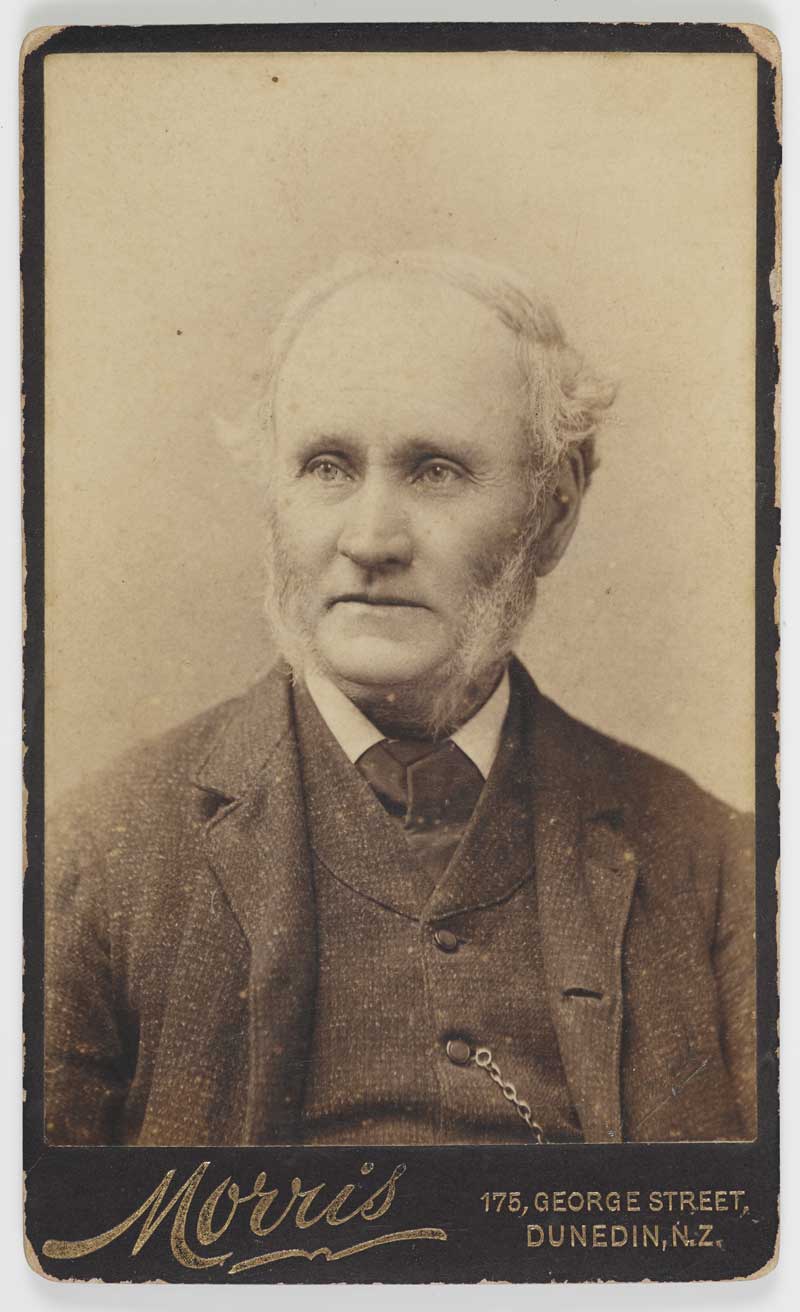






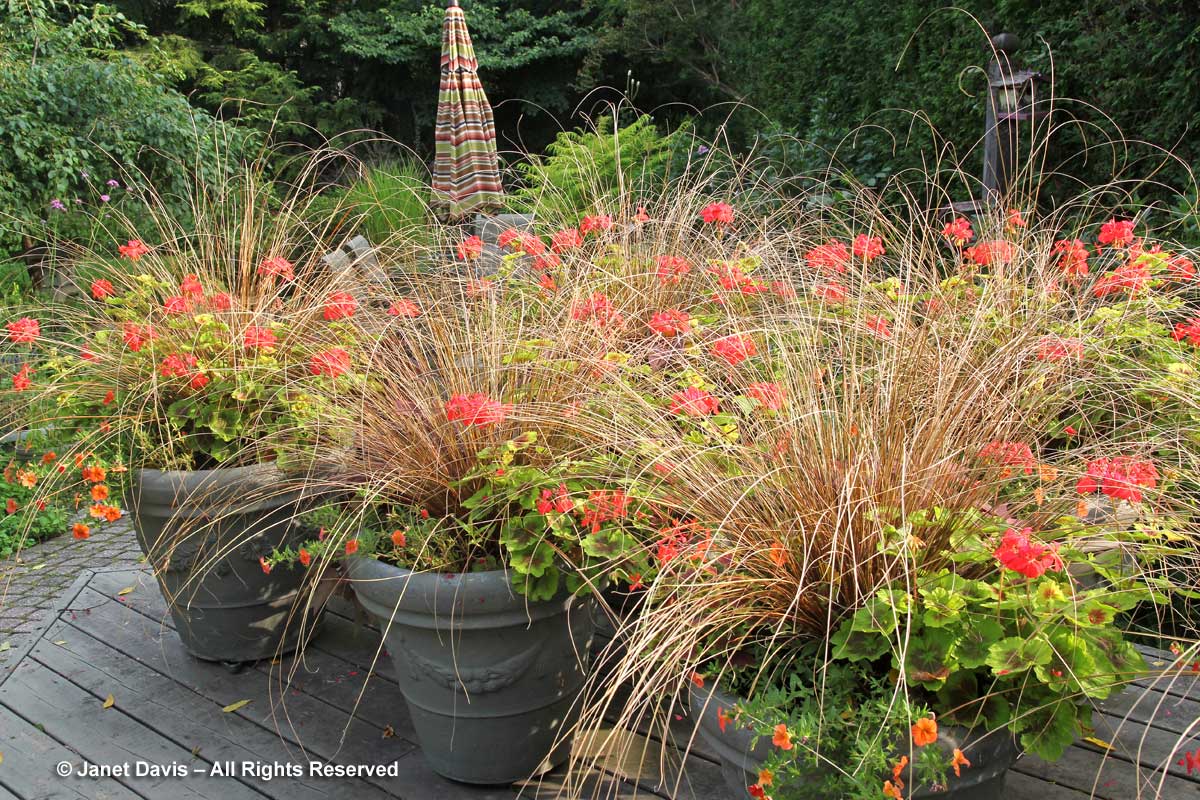
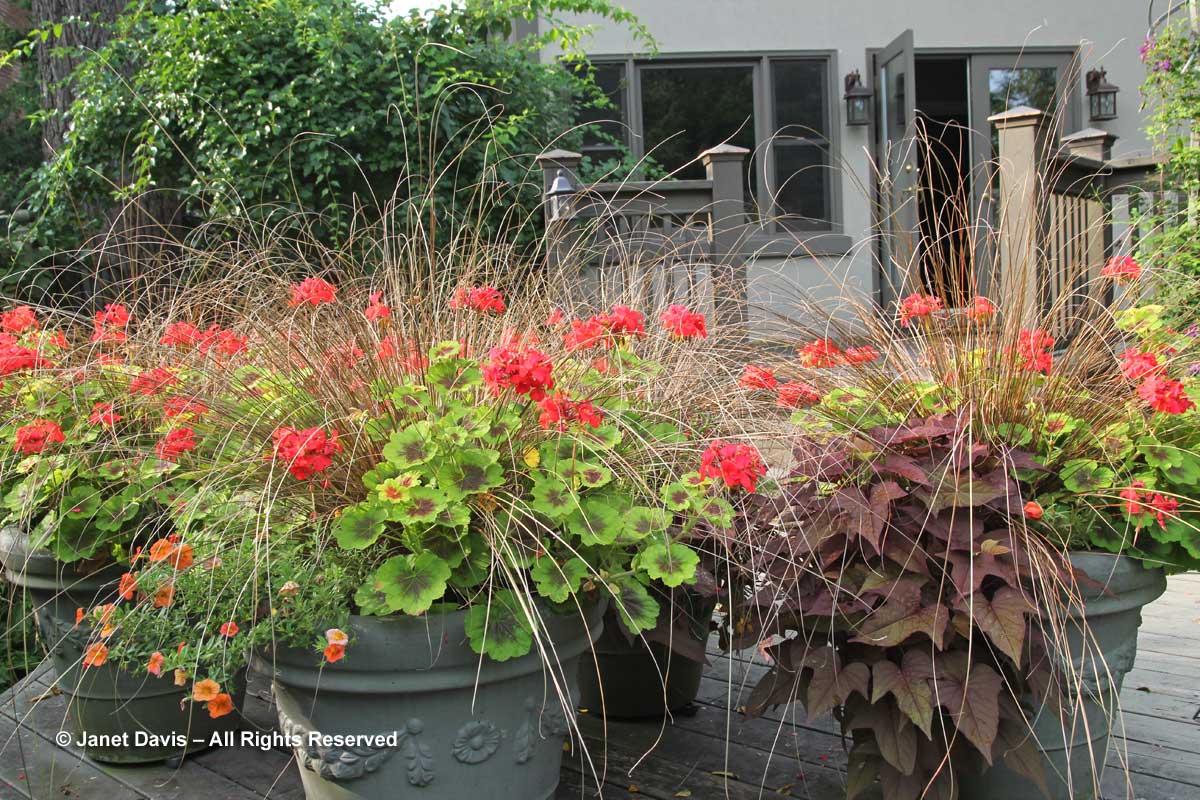
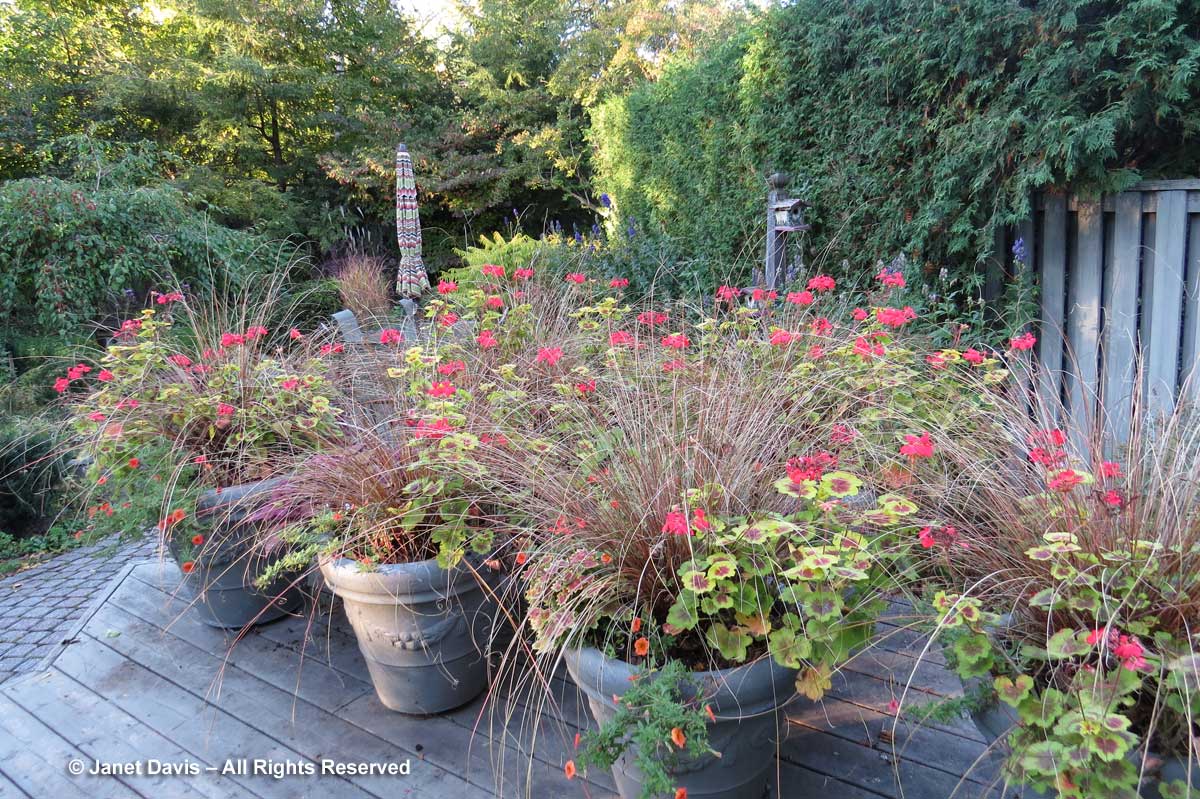
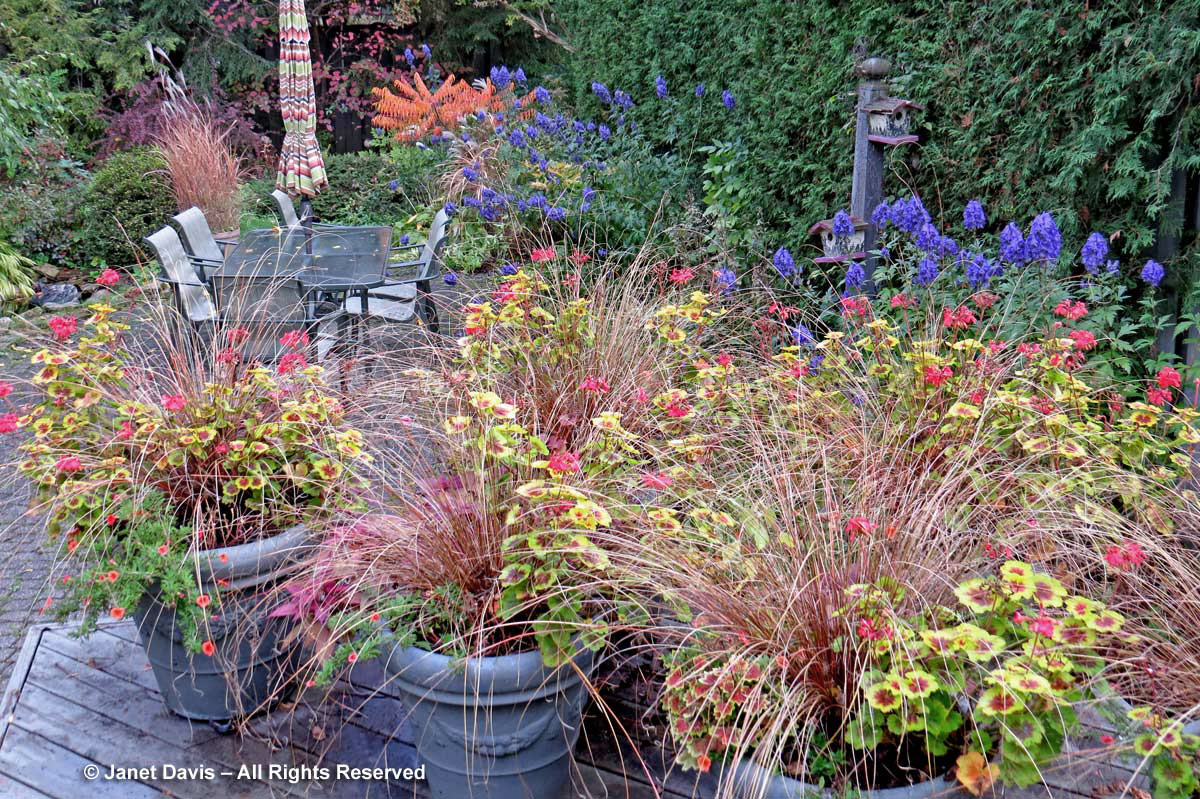





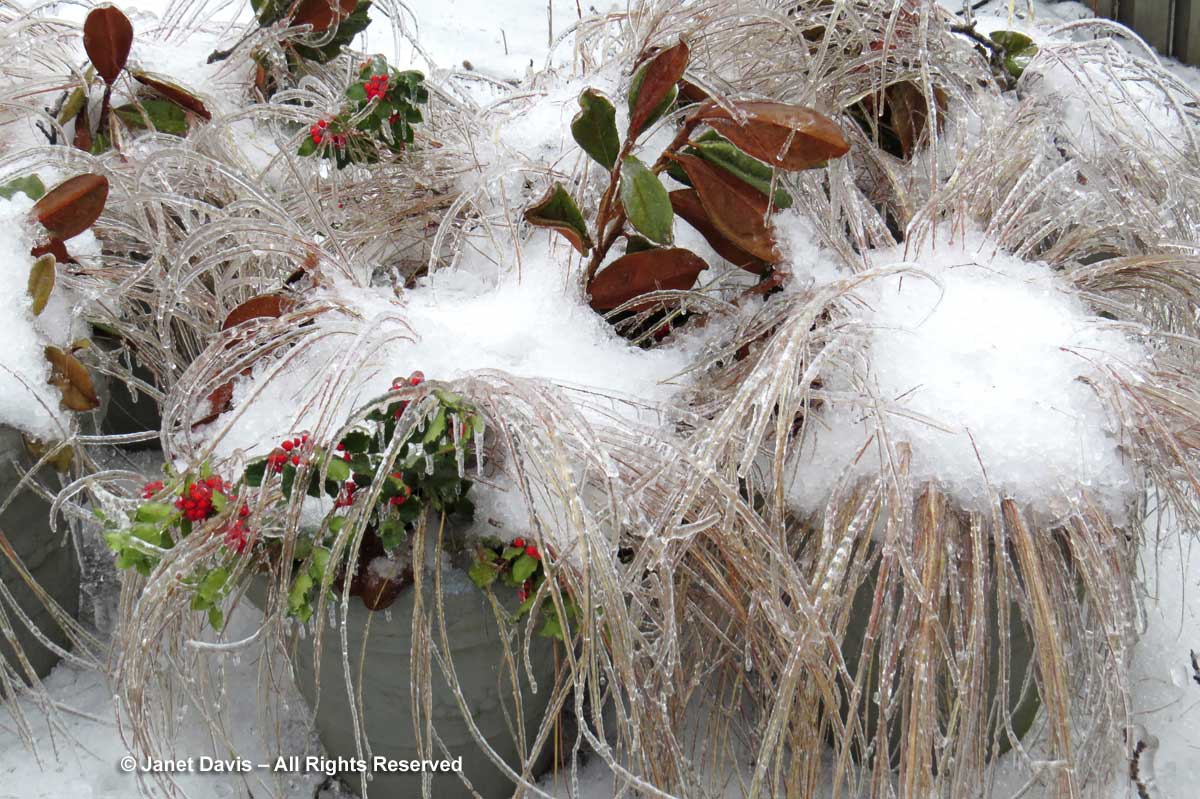

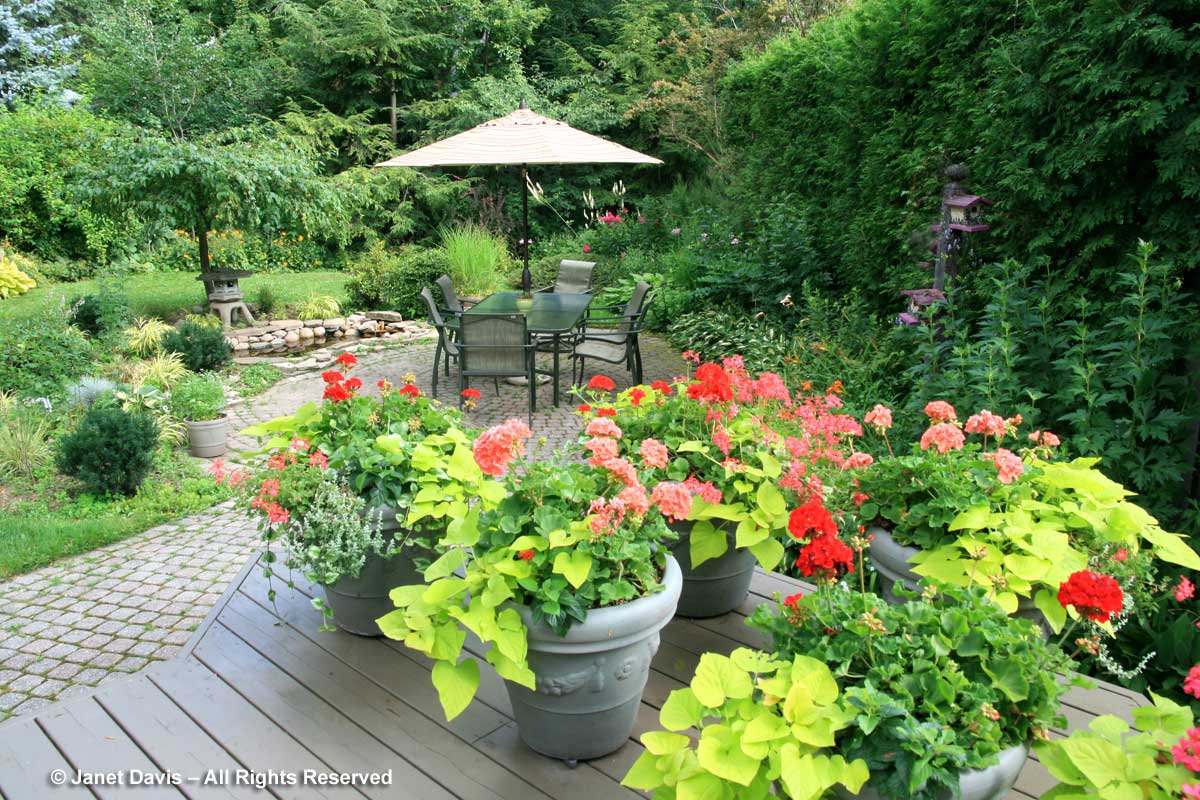
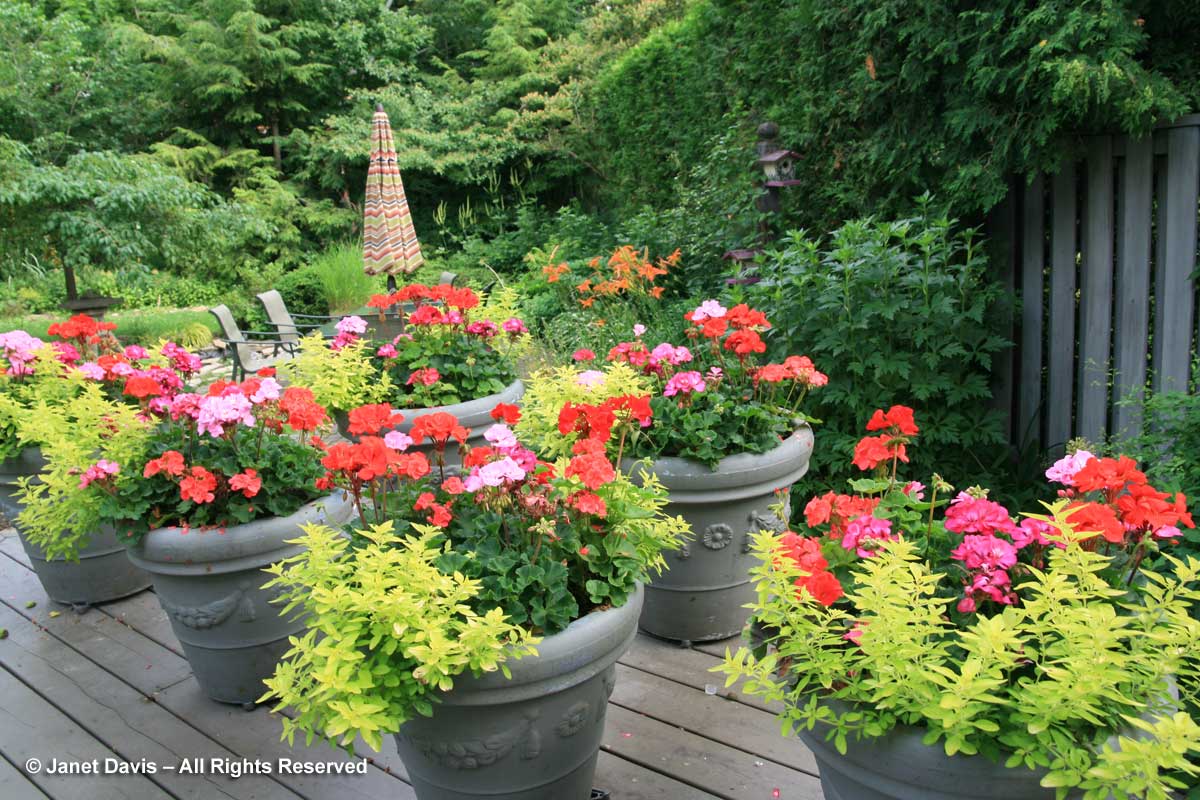
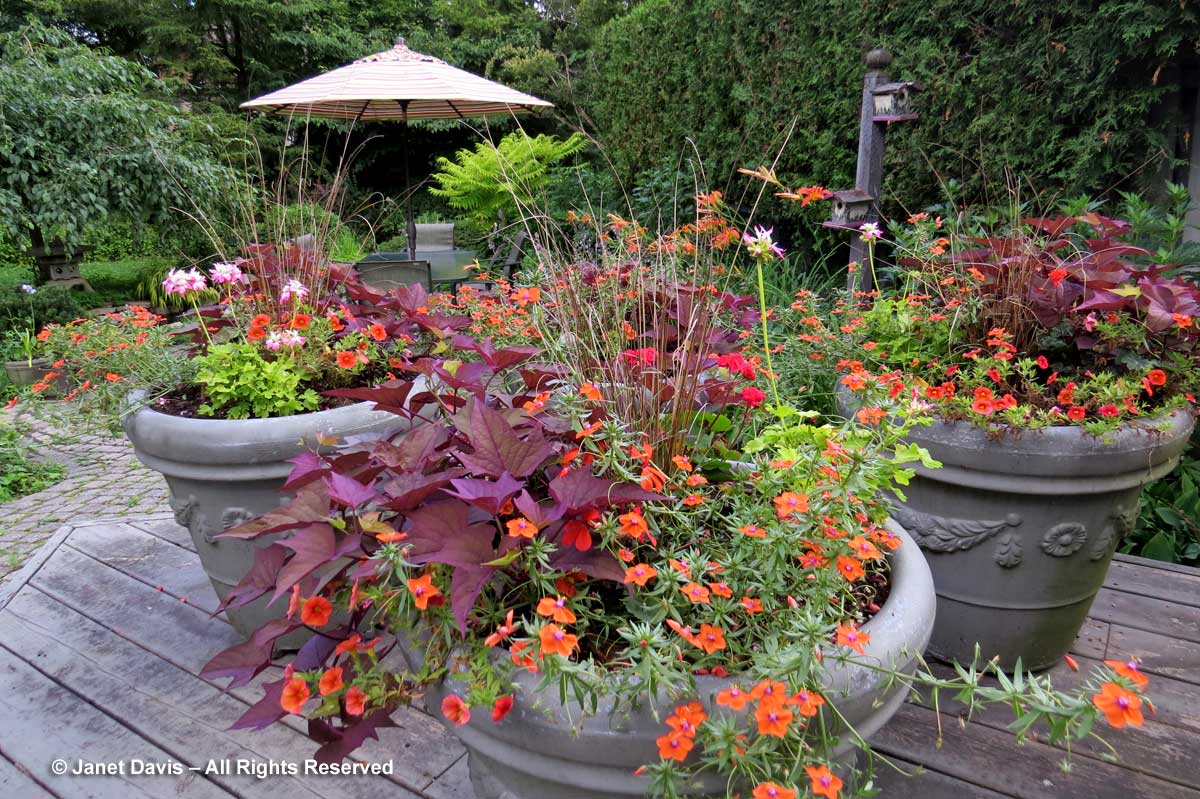




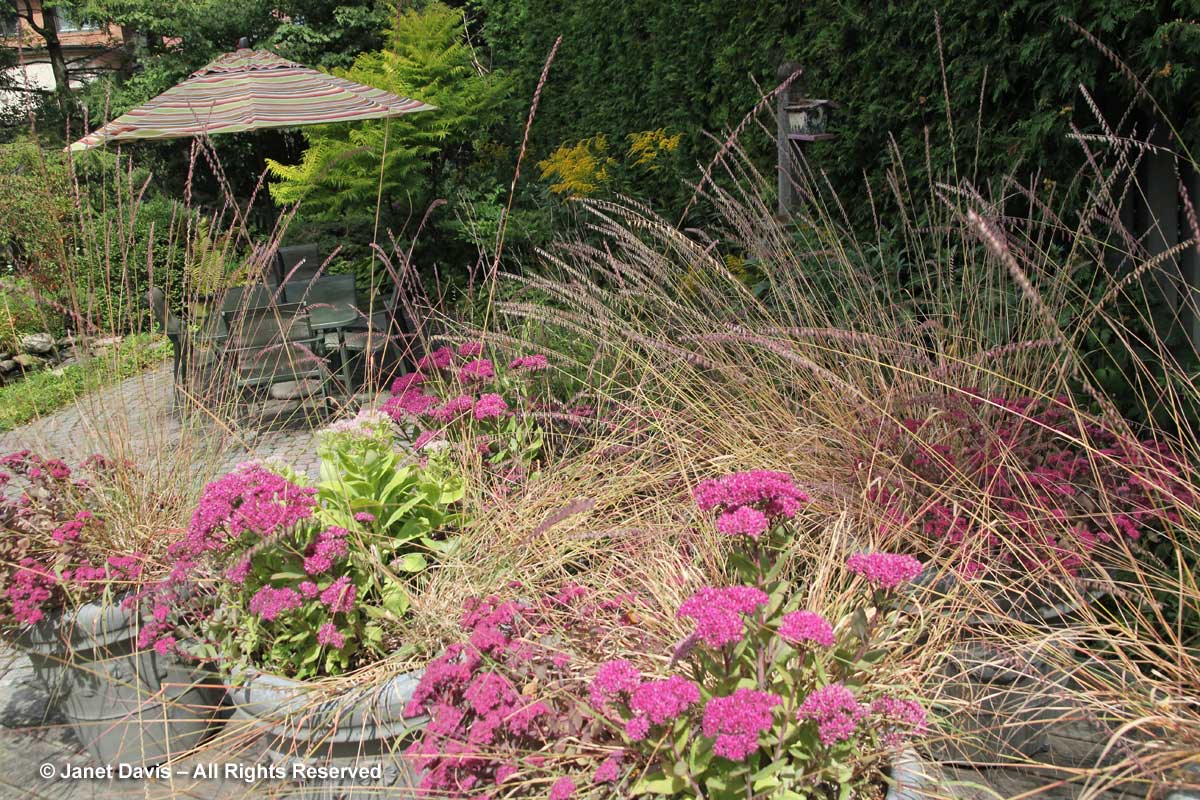
Thanks for all this – some useful thoughts even for warmer uk! Xxx
Thank you Anne!
When it comes to engaging photo chronicles, Janet, you’re hard to match!
Helen, you could also call it obsessive-compulsing chronicling. My husband does! It’s okay.